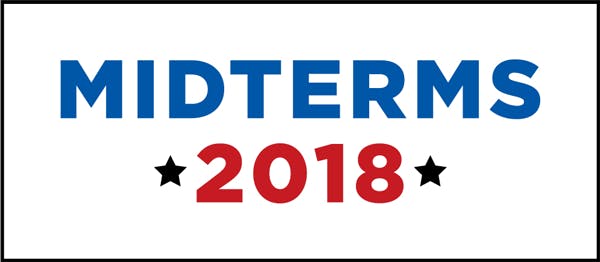Chrissy Houlahan has almost everything Democratic strategists look for in a candidate: A political newcomer, she served in the military and has experience in both the public and private sectors. But perhaps most importantly, this mother of two—affluent, white, and well educated—seems tailor-made to appeal to the suburban women Democratic strategists believe will decide the midterm elections.
Their focus on suburban mothers isn’t new. In 1996, a Washington Post article introduced the “soccer mom” to readers as “an overburdened middle income working mother who ferries her kids from soccer practice to scouts to school.” Journalists spent much of that election scouring suburban parks in search of soccer moms to interview, and both Bill Clinton and his opponent, Bob Dole, geared their campaigns toward the wishes of these voters. Clinton advocated for school uniforms, family leave, teen curfews, and the V-chip to block obscene programming on television—proposals designed to help suburban Americans who, he said, “play by the rules.” As his allies at the Democratic Leadership Council would write two years later, “Sprawl is where the voters are.”
When Clinton won 53 percent of suburban women and kept the White House, the soccer mom was established as a force in American politics, and she has remained one, to varying degrees, ever since. The language has changed over time: In 2003, after September 11, she was a “security mom,” and in 2008, during Sarah Palin’s vice presidential campaign, a “hockey mom.” But the promises Democratic presidential candidates made to her remained largely the same. In 2000, Al Gore promoted a “livability agenda,” promising to address traffic congestion and create more open space and public parks in affluent suburbia. Barack Obama took a similar approach in 2008. Swearing to transcend the red-blue divide and “invest in our middle class,” he won more of the suburban vote than John McCain and, with it, key battleground states like Virginia and Colorado. In 2016, Hillary Clinton paid her own homage, holding events with women in the suburbs of Kentucky, Pennsylvania, and Virginia, where she discussed the cost of childcare and the need to respect women and girls. “We know that white suburban women are critical for both parties,” a senior Clinton campaign official told The Washington Post almost a month before Election Day. They were, the official said, “the lowest hanging fruit.”
“What’s a Soccer Mom Anyway?”—The New York Times, October 1996
“Goodbye, Soccer Mom. Hello, Security Mom.” —Time, May 2003
“Just your average hockey mom.”—Sarah Palin at the Republican National Convention, September 2008
Two years later, Democratic strategists aren’t just trying to reach soccer moms. They’ve recruited candidates who are soccer moms: In New Jersey, 46-year-old Mikie Sherrill, a former Navy helicopter pilot and federal prosecutor who coaches her kids’ soccer and lacrosse teams in Montclair, a desirable New York City suburb, is running for Congress in the 11th District. And in Nevada, Democratic congressional candidate Susie Lee started a weekend sports league for low-income kids, which included soccer practice—something that features prominently on her campaign web site. Even Houlahan, who is running for Congress in Pennsylvania’s 6th District, in the Philadelphia suburbs, uses soccer mom rhetoric. “I really do think I’m being called off the sidelines in a really important time in our nation’s history,” Houlahan told Vice in January.
She’s a good pick for her district, which is overwhelmingly white. But elsewhere, the suburbs are changing. As cities began to gentrify in the 1970s, people moved to the suburbs in search of cheaper housing. Suburbs now have a higher rate of poverty than many urban areas do. More than 60 percent of their adult residents do not have college degrees; 35 percent, according to a 2010 Brookings Institute report, are minorities. Even soccer itself—the preferred extracurricular activity of white suburban children in the 1990s—has undergone a change. Parents now routinely shell out thousands of dollars annually for their children to participate in leagues and tournaments, excluding the growing number of low-income immigrant and refugee children living in the suburbs.
As the suburbs change, Democrats will need fewer candidates like Houlahan and more who can speak to the diverse and financially strapped voters who represent tomorrow’s sprawl. These future voters will likely be more concerned with economic equality than economic growth, criminal justice reform more than national security—and they will see “livability” in a higher minimum wage and debt relief, not in easing traffic flows and creating more open space.
In this, Stacey Abrams, the African American Democratic candidate for governor in Georgia, may be a better model. Her suburban strategy is focused on the large African American population that has been settling in the suburbs outside Atlanta over the last 20 years. Her platform is unapologetically left-leaning: pro-choice, pro–gun control, and pro–public school. Whatever the outcome in November, her win in the primary is a clear reminder that Democrats can’t rely on the strategies and definitions of the past. They have to see the soccer mom for who she is now—and go get her.

